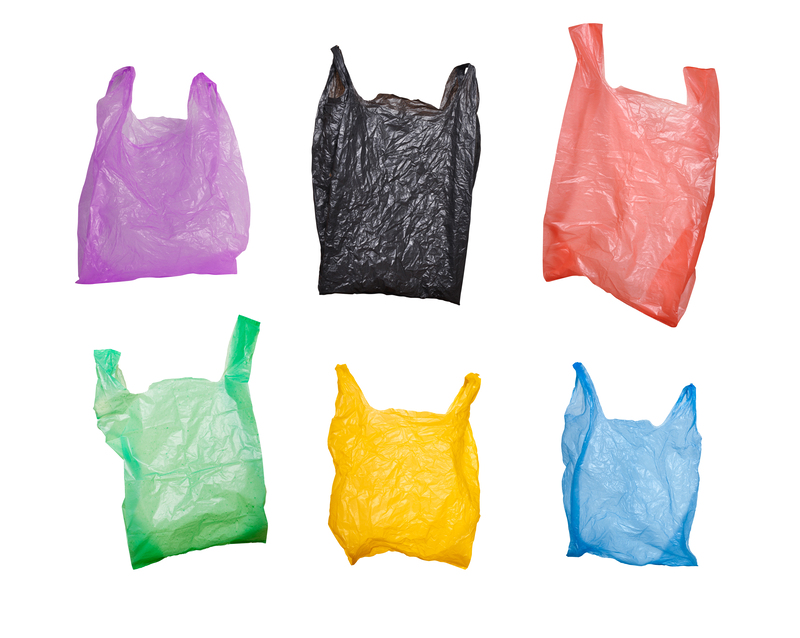Smart Strategies for Disposing of PPE Waste Responsibly
The widespread use of Personal Protective Equipment (PPE) has become a significant aspect of daily life in various sectors, especially since the global pandemic. While PPE such as masks, gloves, gowns, and face shields contribute greatly to public health, they also create an emerging environmental challenge: proper PPE waste disposal. In this comprehensive guide, we explore smart strategies for managing and disposing of PPE waste responsibly to ensure both public safety and environmental preservation.
Understanding PPE Waste: Types and Impact
Personal Protective Equipment includes a range of items, primarily used to protect individuals from infectious diseases or hazardous substances. These include:
- Face masks (surgical, N95, and reusable masks)
- Gloves (latex, nitrile, vinyl)
- Disposable gowns and coveralls
- Face shields and goggles
PPE waste is categorized as a subset of medical or infectious waste, but due to extensive public use, it's also found in community and household waste streams.
Environmental Consequences
PPE items are often made from non-biodegradable plastics like polypropylene and polyethene, leading to environmental concerns:
- Landfill Burden: PPE waste adds significantly to landfills, persisting for decades without decomposing.
- Marine Pollution: Improperly disposed PPE can end up in rivers and oceans, threatening aquatic life.
- Microplastic Formation: As PPE breaks down, it can become microplastics, which are harmful to both wildlife and humans.
- Disease Transmission: Infected PPE waste poses a risk to sanitation workers and the community if not handled correctly.

Smart PPE Waste Disposal Strategies
To mitigate these risks, adopting intelligent PPE waste management practices is essential for businesses, healthcare facilities, institutions, and individuals. Let's delve into effective methods and responsible approaches to PPE disposal.
1. Segregation of PPE Waste at Source
Effective PPE waste disposal begins with proper segregation. Always separate used PPE from regular household or office waste. Use clearly labeled bins--ideally colored red or yellow with biohazard symbols--specifically for PPE collection.
- Home Use: Set aside a dedicated bag or bin for masks and gloves.
- Healthcare Facilities: Adhere to medical waste segregation protocols, using color-coded containers.
- Businesses/Offices: Place PPE disposal stations in high-traffic areas for employee convenience.
Segregation prevents cross-contamination and simplifies the subsequent treatment and safe disposal of PPE waste.
2. Safe Storage Prior to Disposal
PPE waste must be stored properly before collection or final disposal. Use leak-proof, puncture-resistant bags or containers, and avoid overfilling. Always tie bags securely to minimize the risk of spillage or exposure.
- Mark containers with "PPE Waste Only" or appropriate hazard labels.
- Store bags away from children, pets, and public walkways.
- Sanitize the area and containers regularly to reduce exposure risks.
3. Disposal Through Appropriate Waste Streams
PPE waste should never be disposed of in regular recycling bins, as it can contaminate recyclables. Instead, use the following smart disposal channels:
- Municipal Waste Collection: Many cities have introduced special PPE waste pickup or drop-off points. Check your local guidelines for designated collection programs.
- Hazardous or Clinical Waste Service: In healthcare settings, PPE should be incinerated or treated as hazardous waste, following government regulations.
- Onsite PPE Waste Bins: Many businesses and schools offer PPE-specified bins for visitors and employees, coordinating with a certified waste handler for regular collection.
4. Innovative PPE Waste Recycling Initiatives
The sustainability movement is driving new solutions for PPE waste management. While traditional recycling streams do not accept used PPE, a few innovative recycling programs have emerged:
- Specialized Recycling Facilities: Certain companies have established processes to melt down used masks and gloves, converting them into building materials, fuel, or plastic lumber.
- Terracycle Collection Points: Some non-profits and waste companies accept PPE in specially marked boxes, ensuring proper cleaning and transformation into usable products.
- Reuse by Design: Promoting reusable PPE, such as washable masks and gowns, drastically cuts down on single-use waste.
For organizations seeking eco-friendly disposal, partnering with these initiatives demonstrates environmental responsibility and aligns with sustainable PPE waste management goals.
5. Disinfection Before Disposal
If PPE is to be stored, recycled, or handled by others, consider disinfecting it to minimize the risk of disease transmission. Spray gloves or masks with a suitable disinfectant, or store them for a recommended period (24-72 hours) before handling further.
- Keep disinfection protocols updated as guidelines evolve.
- Never burn PPE waste independently, as home incineration releases toxic fumes.
6. Public Awareness and Training
Increase community awareness through campaigns about the importance of proper PPE disposal:
- Display signage in public spaces showing where and how to dispose of PPE items.
- Conduct staff trainings in businesses and schools on PPE waste handling and disposal techniques.
- Utilize digital platforms and social media to spread information about responsible PPE waste practices.
An informed public is key to reducing litter and environmental harm from PPE waste.
7. Compliance with Local Regulations
Always adhere to government requirements and health department recommendations regarding the disposal of PPE and other biohazardous waste. Rules can differ by region, impacting the acceptable methods and facilities for safe disposal.
- Check for updates from environmental agencies and health authorities.
- Obtain the necessary certifications or permits if disposing of PPE waste in bulk or as an institution.
Challenges in PPE Waste Management
While smart PPE waste disposal strategies offer robust solutions, several challenges remain:
- Volume: The surge in PPE use has overwhelmed many municipal waste systems.
- Lack of Standardization: Different localities may have conflicting guidelines.
- Recycling Limitations: Soiled PPE can be difficult and dangerous to recycle using conventional methods.
- Public Non-compliance: Improper disposal, like littering, often persists due to lack of awareness or convenient options.
By anticipating and addressing these obstacles, communities and organizations can adopt more effective and resilient PPE waste solutions.
Best Practices for Organizations and Institutions
Businesses, schools, healthcare providers, and institutions play a crucial role in controlling PPE waste. Some responsible PPE waste management practices include:
- Creating Clear Policies: Draft and share written guidelines on PPE use, removal, and disposal specific to your workplace or facility.
- Installing Specialized Collection Bins: Use visible and secure collection points with clear labeling in public and staff areas.
- Maintaining Safe Handling Procedures: Equip custodial staff with appropriate PPE and training for handling waste.
- Partnering with Certified Waste Haulers: Work with licensed contractors to ensure proper treatment, such as incineration, autoclaving, or participation in recycling programs.
- Encouraging Use of Reusable PPE: Where possible, supply washable masks, cloth gowns, and reusable shields to minimize disposable waste.
By modeling best practices, organizations can set a standard for responsible PPE waste disposal that extends to employees, visitors, and the wider community.
Tips for Disposing of PPE Waste at Home
The general public can also take steps to ensure ethical and safe PPE waste disposal at home:
- Don't litter: Always place used masks and gloves in a sealed bag before disposing in the general waste.
- Do not flush: Never flush PPE down the toilet, as this can block sewage systems and pollute water bodies.
- Reduce, Reuse, Replace: Switch to reusable masks and face coverings where practical, and clean them regularly.
- Check community programs: Participate in local or manufacturer-based take-back or collection schemes for used PPE.
- Wash your hands: After handling used PPE, always wash your hands thoroughly with soap and water.
Every household effort counts toward reducing environmental contamination and health risks associated with PPE litter.
Global Innovations in PPE Waste Disposal
Around the world, forward-thinking projects are being launched to tackle rising PPE waste:
- Melbourne, Australia: Road surfaces made from shredded masks to repurpose waste material and strengthen infrastructure.
- China: Large-scale incineration and use of high-temperature autoclaves to destroy PPE waste with minimal environmental impact.
- Europe: Pilot projects converting hospital PPE waste into fuel or new plastic products for the construction industry.
- USA: Mail-back programs and drop-off locations for community-wide PPE waste collection and processing.
These initiatives signal a new era of responsible and innovative PPE waste management, promoting sustainability while maintaining public health standards.

Frequently Asked Questions About PPE Waste Disposal
-
Can PPE waste be recycled in normal recycling bins?
No, used PPE is classified as contaminated waste and must not be placed in standard recycling streams. -
Is incineration safe for PPE disposal?
When done in regulated facilities, incineration is an effective way to destroy pathogens and reduce landfill load. -
What should I do if my area does not have a PPE waste collection program?
Double bag your PPE waste, seal it securely, and dispose in general waste while following any local advisories. -
Are biodegradable PPE options available?
Some manufacturers are producing compostable masks and gloves, but always verify their disposal needs--compostable PPE still shouldn't go in plastic recycling bins. -
How can I encourage others to dispose of PPE waste responsibly?
Lead by example, share information, and advocate for better disposal infrastructure in your community.
Conclusion: Building a Cleaner, Safer Future
Smart strategies for disposing of PPE waste responsibly are vital as we strive to protect both human health and the planet. Whether through proper segregation, participation in specialized recycling initiatives, or by raising public awareness, every action counts. By embracing best practices at home, in business, and in public spaces, we can collectively minimize environmental impact and ensure a healthier legacy for future generations.
Stay informed, stay safe, and make PPE waste management a top priority in your community!